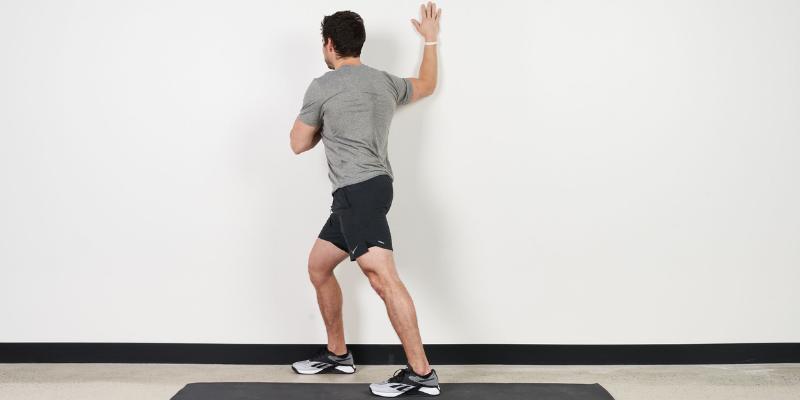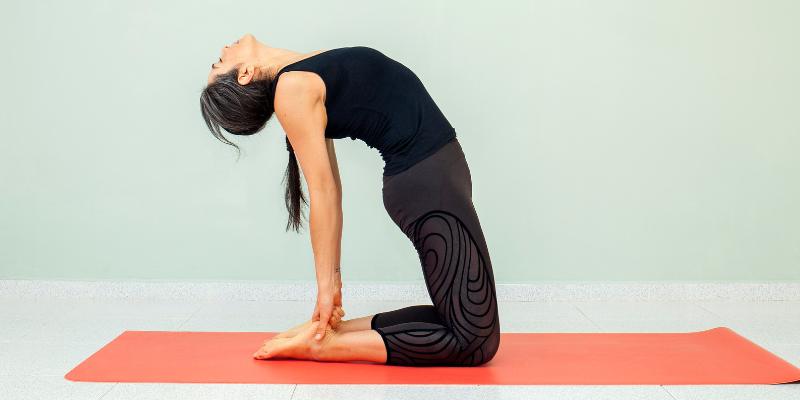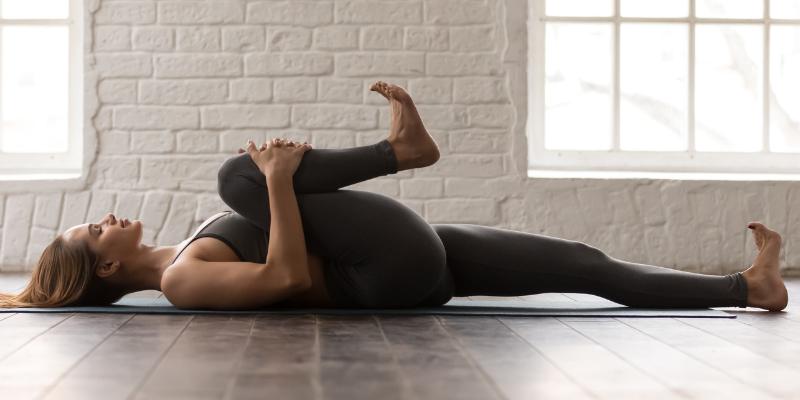Chest stretches are essential for anyone experiencing tight, sore muscles or poor posture resulting from prolonged sitting or repetitive movements. Whether you're an office worker, athlete, or someone simply looking to increase flexibility, stretching your chest muscles can offer significant relief and improvement in daily function.
Regularly incorporating targeted chest stretches can open up the front of your body, counteract slouching, and support a more upright posture. These movements not only enhance your mobility but also reduce shoulder tension and prevent long-term muscular imbalances. In this article, we explore the top 7 chest stretch variations designed to improve flexibility, relieve tightness, and help you stand taller and breathe better every day.
Wall Chest Stretch:
How to Do It:
Stand next to a wall with your feet firmly grounded. Extend one arm out at shoulder height and place your palm flat against the wall. Slowly turn your body away from the outstretched arm while keeping your shoulder down and relaxed. You'll feel a stretch across the chest and shoulders. Hold this position for about 20–30 seconds, then switch sides. Avoid leaning too hard or over-rotating the spine.
Why It Works:
This stretch targets the pectoralis major and minor, loosening up the front of the chest. It opens the shoulders and counteracts the forward rounding caused by slumping or screen time.

Doorway Chest Stretch:
How to Do It:
Stand in the middle of an open doorway and place your forearms against each side of the frame, with elbows at about shoulder height. Step one foot forward into the doorway while gently leaning your torso through it. This creates a controlled stretch across your chest. Keep your neck neutral and avoid arching your lower back. Hold for 20–30 seconds, then relax.
Why It Works:
By engaging both arms and stepping forward, this stretch targets the heads of the pectoral muscles deeply and encourages better shoulder alignment, which is ideal for improving posture.
Seated Chest Opener:
How to Do It:
Sit on the floor or a chair with your back straight and legs comfortably placed. Interlace your fingers behind your back and straighten your arms. Slowly lift your hands upward and away from your back while gently opening your chest and drawing your shoulder blades together. Keep your chin level and avoid shrugging your shoulders. Hold this stretch for 20–30 seconds.
Why It Works:
This seated variation activates the chest muscles while promoting thoracic spine extension, helping you reset your posture and undo slouching.
Standing Chest Expansion:
How to Do It:
Stand tall with your feet shoulder-width apart. Reach your arms behind you and clasp your hands together. Straighten your arms while gently pulling them back and lifting your chest upward. Focus on keeping your ribs down and core slightly engaged to protect your spine. Hold this position for 20–30 seconds, then release.
Why It Works:
This stretch helps lengthen tight chest muscles, particularly after long periods of sitting. It also increases oxygen intake by improving rib cage mobility.
Lying Chest Stretch:
How to Do It:
Lie face down on the floor with your right arm extended straight out to the side at shoulder height. Slowly roll onto your right side by pushing with your left hand. Your right shoulder should remain grounded as your torso twists. You'll feel a deep stretch across the chest and front deltoid. Hold for 20–30 seconds, then repeat on the other side.
Why It Works:
This passive stretch targets the anterior deltoids and pectoral muscles deeply. It's especially beneficial for those recovering from upper body tightness due to workouts or desk work.
Floor Angels:
How to Do It:
Lie on your back with your knees bent and feet flat. Extend your arms out to the sides at a 90-degree angle, forming a "goalpost" shape. Slowly raise your arms overhead while keeping them and your lower back in contact with the floor. Move with control and return to the starting position. Repeat for 8–10 slow repetitions.
Why It Works:
This dynamic stretch increases chest and shoulder mobility, strengthens postural muscles, and improves awareness of scapular movement.
Camel Pose (Yoga-Inspired Stretch):
How to Do It:
Kneel on the floor with your knees hip-width apart and hands resting on your lower back. Gently press your hips forward while lifting your chest toward the ceiling. Optionally, reach your hands down to your heels for a deeper stretch. Keep your neck in a neutral position and avoid over-arching your lower back. Hold for 20–30 seconds, then slowly come up.
Why It Works:
This pose powerfully opens the chest and activates the upper thoracic spine. It helps restore flexibility and breathing capacity, which is especially beneficial after prolonged periods of sedentary activity.

Benefits of Chest Stretching:
- Improved posture: Regular chest stretching helps realign rounded shoulders and promotes an upright posture.
- Enhanced breathing: Tight chest muscles restrict rib movement. Stretching opens the chest for fuller, deeper breaths.
- Reduced muscle tension: Stretching relieves tightness and helps prevent chronic soreness in the chest and upper shoulders.
- Better flexibility and mobility: Increases the range of motion in your shoulders and upper body, reducing stiffness and discomfort.
- Injury prevention: Balanced muscles support joint stability and reduce the risk of strains or imbalances.
When Should You Do Chest Stretches?
- After long periods of sitting or computer work.
- Following a chest or upper body workout.
- As part of your morning or evening mobility routine.
- Before or after sports that involve pushing movements, such as swimming, tennis, or weightlifting.
Conclusion
Incorporating these top 7 chest stretches into your daily or weekly routine can unlock greater flexibility, reduce soreness, and significantly improve posture. Whether you're easing muscle tightness or simply seeking better movement, these stretches offer effective results without the need for equipment or complex techniques.
Consistency is key—take a few minutes each day to perform these gentle, controlled movements, and you'll feel more open, balanced, and at ease in your body. From beginners to seasoned exercisers, everyone can benefit from a chest-focused flexibility routine. So why wait? Discover the benefits of regular chest stretching today and feel the difference in how you stand, move, and breathe.












